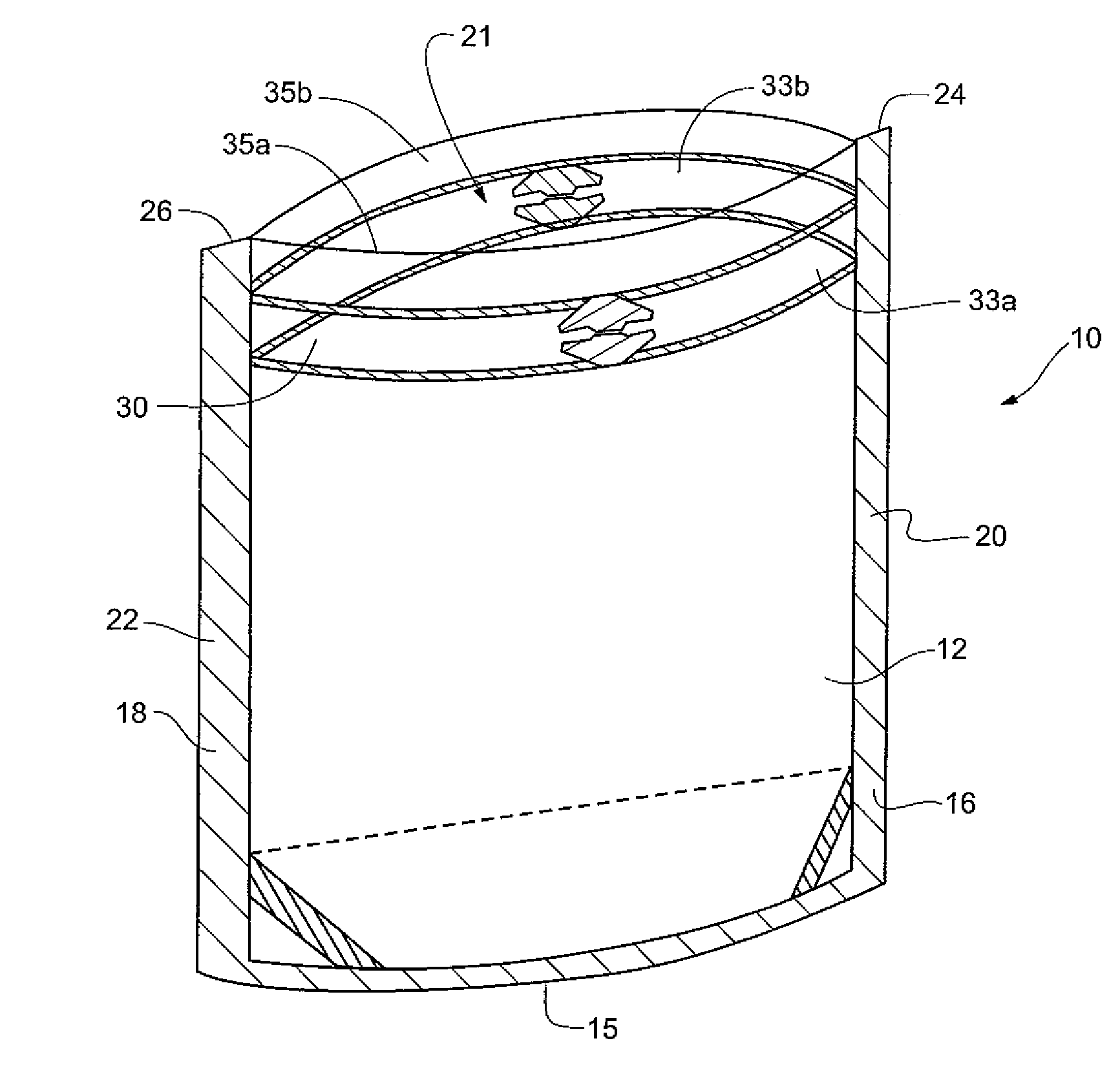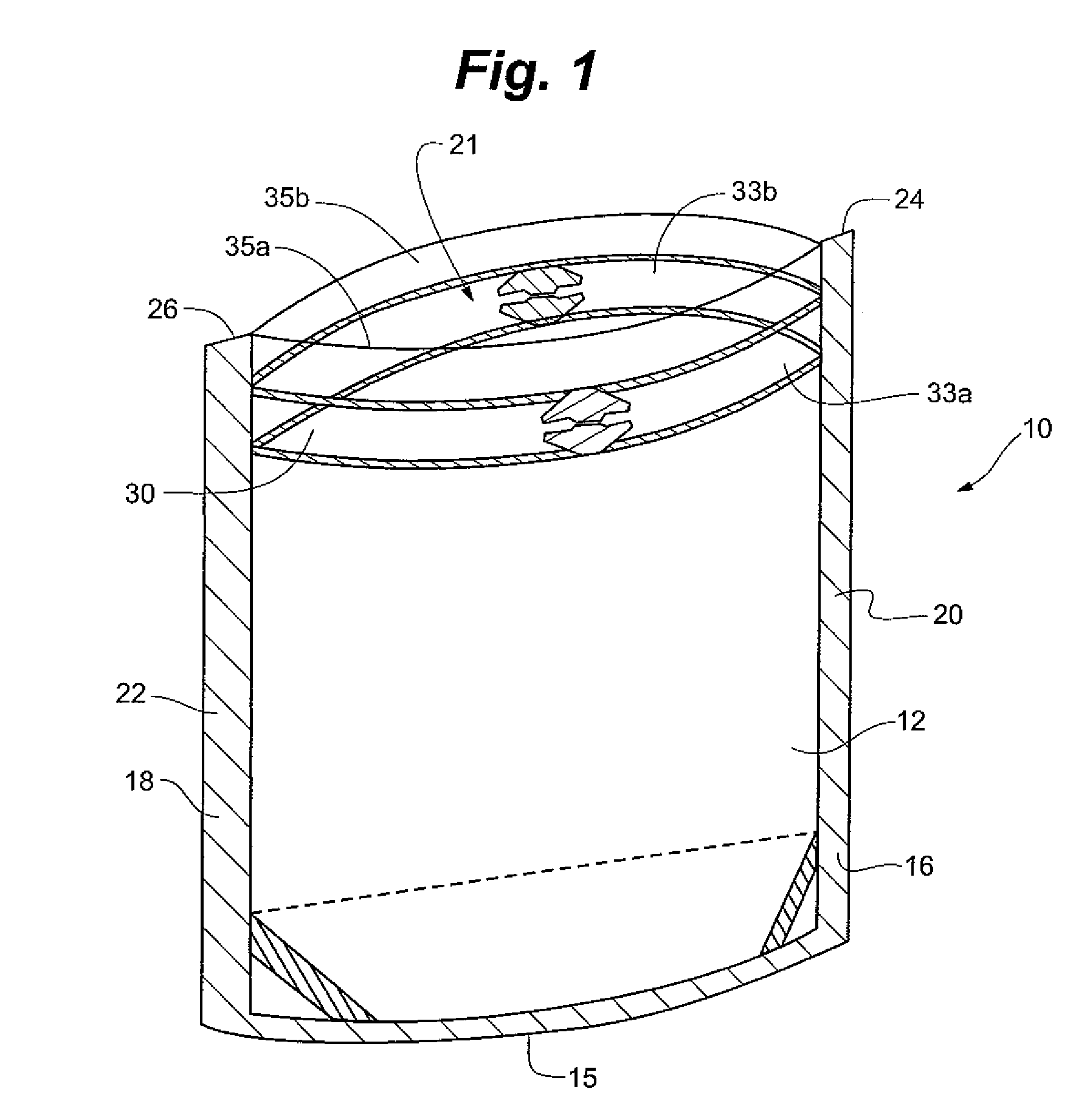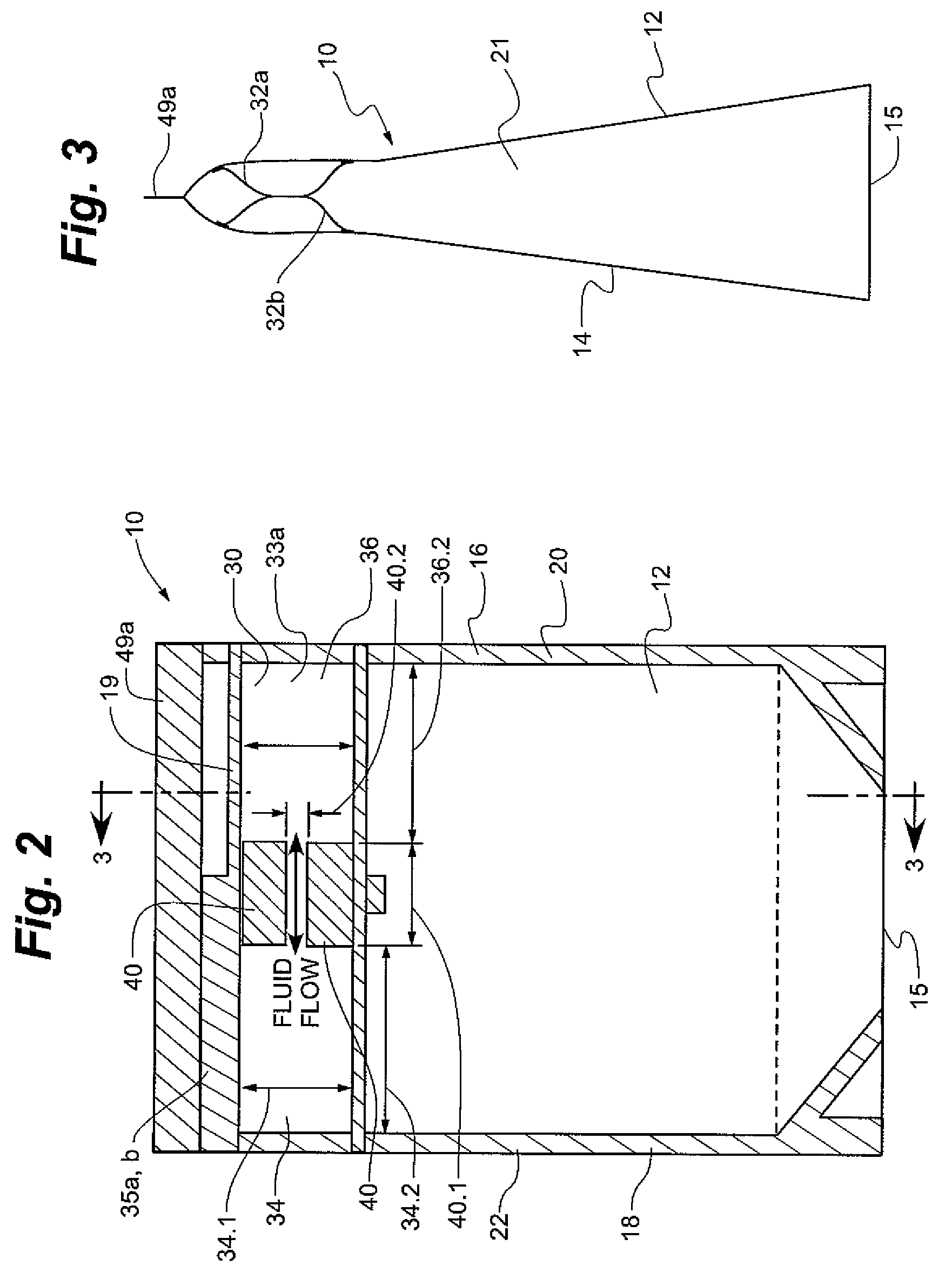Packages having bubble-shaped closures
a packaging and bubble technology, applied in the field of flexible packaging, can solve the problems of failure of a true closure, breach of interlocking components, and the manufacturing of additional and often costly materials and/or devices into the packages, and achieve the effect of repeatable sealing performan
- Summary
- Abstract
- Description
- Claims
- Application Information
AI Technical Summary
Benefits of technology
Problems solved by technology
Method used
Image
Examples
Embodiment Construction
[0073]Referring generally to FIGS. 1-16, a flexible package 10 in accordance with the present invention is shown. Referring generally to FIGS. 1-3, the package 10 generally includes a front panel portion 12, a back panel portion 14. Further, a bottom panel portion 15, gusseted or non-gusseted, can be included, especially in those embodiments defining a stand up package. The joining and / or shaping of the panels 12, 14, 15, generally define an inner cavity 21 having an adjustable internal volumetric capacity. The inner cavity 21 is capable of storing, transporting and / or dispensing product or other objects and material therein. Side panel portions (not shown), gusseted or non-gusseted, may also be included. The panel portions 12-15 are often referred to as webs, films or layers.
[0074]The package panel portions 12-15 are generally constructed of a flexible sheet material such as polyethylene, polyester, metal foil, polypropylene, or polyethylenes laminated with other materials such as ...
PUM
| Property | Measurement | Unit |
|---|---|---|
| length | aaaaa | aaaaa |
| flexible | aaaaa | aaaaa |
| area | aaaaa | aaaaa |
Abstract
Description
Claims
Application Information
 Login to View More
Login to View More - R&D
- Intellectual Property
- Life Sciences
- Materials
- Tech Scout
- Unparalleled Data Quality
- Higher Quality Content
- 60% Fewer Hallucinations
Browse by: Latest US Patents, China's latest patents, Technical Efficacy Thesaurus, Application Domain, Technology Topic, Popular Technical Reports.
© 2025 PatSnap. All rights reserved.Legal|Privacy policy|Modern Slavery Act Transparency Statement|Sitemap|About US| Contact US: help@patsnap.com



